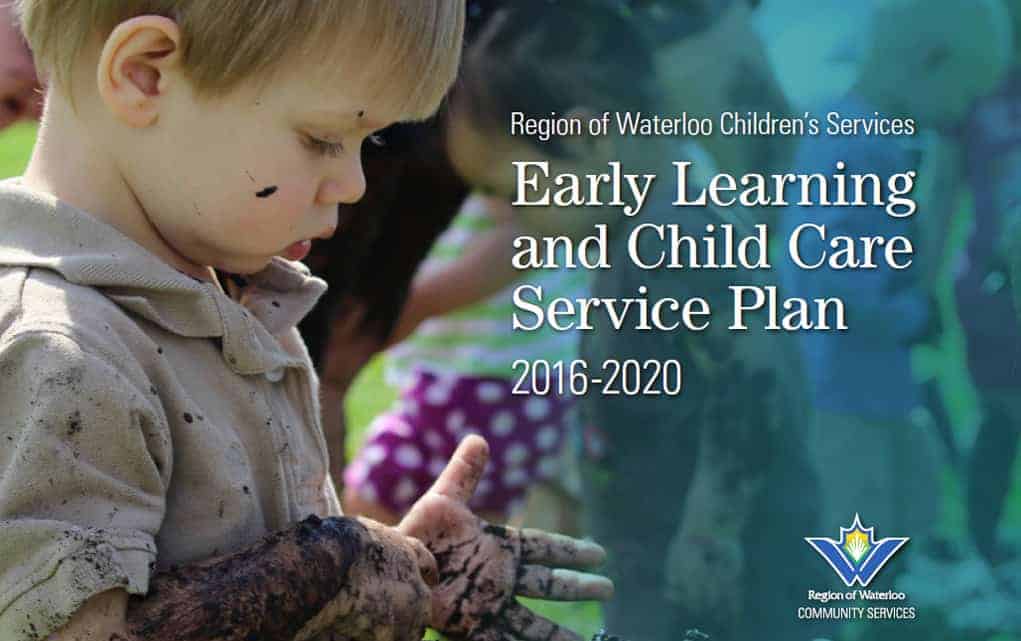A new multi-year plan released by the Region of Waterloo’s children’s services this week aims to be the next step in providing more accessible and affordable child care centres to parents across the region.
Nancy Dickieson, director of children’s services for the region says the 2016-2020 Early Learning and Child Care Service Plan is largely based on input gathered from a variety of sources including more than 1,100 parents.
Availability, affordability, accessibility and awareness are the barriers indicated by families looking for child care.
“Cost is a barrier and a challenge for many families. We certainly heard from families their preference in location of child care would be within their neighbourhoods so that they’re not having to do long commutes,” Dickieson said.
Of the parents surveyed, 66 per cent indicated the location of child care was the most important factor influencing their choice of child care. In addition, 65 per cent of them said cost was a top factor they would change about the current system.
The main piece of advice in the survey that families offered to new parents looking for child care was to start early.
According to 2015 data from the report, only eight per cent of children (0-48 months) in Woolwich had access to a licensed centre-based or home-based space, and only six per cent of them did in Wellesley.
With this new plan the region is looking at creating a master plan around where child care should be located. As they begin to expand the system they’ll determine where the greatest demand and largest population of young children is to recommend as key neighbourhoods for additional child care centres.
“The other big piece is really about continuing to build capacity within our licensed child care system to provide services to families especially as we move into a more diverse population, and just improving the experience for families. Finding child care is a very hard thing to navigate and we heard that from many parents in our survey with them. It’s trying to find ways that we can make it as simple as possible,” Dickieson said.
They want to accomplish five actions over the next four years, which are to develop the master plan, improve access to affordable high quality licensed early learning and child care, build capacity to support the inclusion of all children in these centres, address the service experience for families with early years services and mobilize a renewed approach to continuous quality improvement for all early years services.
“The next step is to consult with our community again and we’ll develop a multi-year implementation plan in consultation around what are our top priorities to work on. One of the other key things we’ll be working on with the community is the launch of a new quality initiative as well,” Dickieson said.
They’re also planning to improve their centralized registration and wait list.
As of April 30, 2016 the region had 133 licensed child care centres, with a capacity of 4,727 spaces for infants all the way up to school age children. Of those spaces, only 203 are for infants, with 1,258 for toddlers and 2,856 for preschool.
In addition, there are 433 licensed home child care providers caring for approximately 1,300 children in the region.
The region created a similar plan for 2010-2015. She says back then one of their goals was to focus on stabilizing the system since full-day kindergarten had been announced and was being rolled out across the province.
“It impacted the demand for programs for four and five year olds because full-day kindergarten was available. In addition to that the availability of before and after school programs right in the school was being provided. It impacted the focus of many of our childcare operators to start to look at younger age populations,” Dickieson said.
Both Woolwich and Wellesley townships showed stable live birth rates according to data from 2013 and 2014. Woolwich had 306 live births in 2013, down by just one to 305 in 2014. Wellesley had 119 live births in 2013 and decreased to 117 in 2014.
“There is a great deal of variability across the townships and the cities as well, but I would say the townships are not as well served. And that’s primarily because the combination of rural and urban. The population base is very different in the townships than in the urban cities,” Dickieson said.
She says the hope is for this plan to move them forward in addressing child care issues throughout the region, possibly with some help from the provincial Schools-First Child Care Capital Retrofit Policy, which builds additional child care centres in the same location as schools.
The full 2016-2020 Early Learning and Child Care Service Plan is available at www.communityservices.regionofwaterloo.ca.








